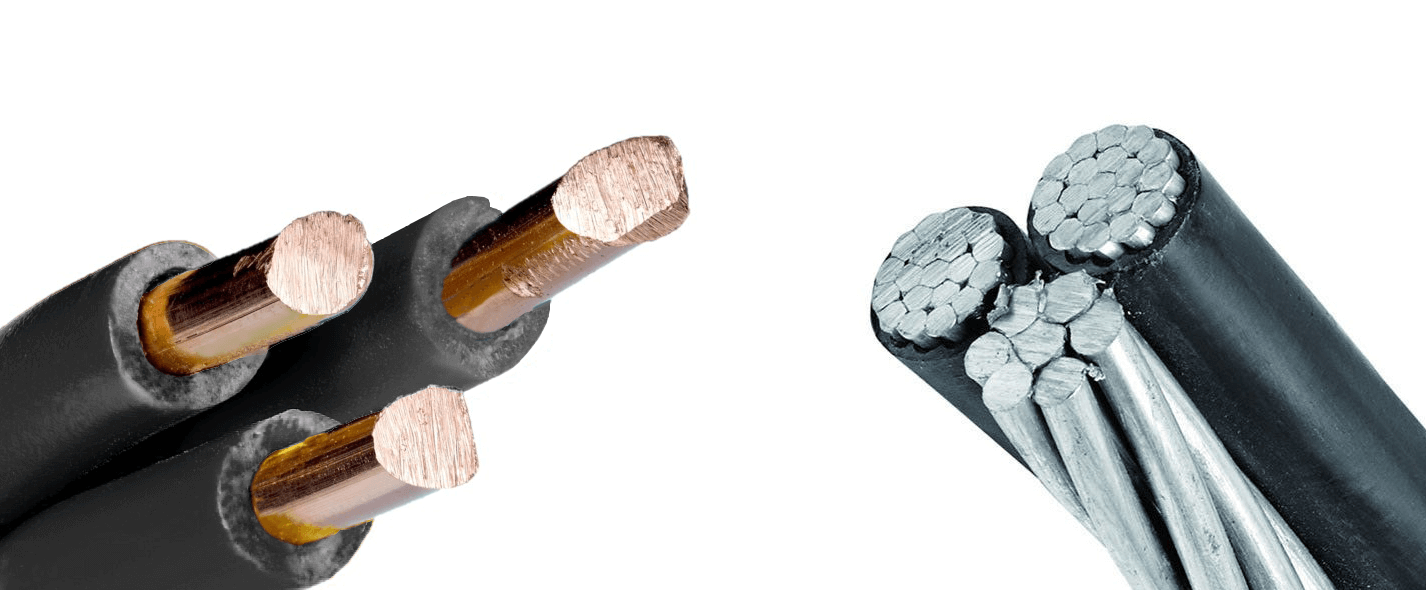Copper is by far the most widely used conductor in electrical wiring. It benefits from high conductivity and corrosion resistance, making it perfect for a wide range of applications. Due to high demand however, it is significantly more expensive when compared to alternatives such as aluminium. We we will clear up the debate of Aluminium Vs Copper Cables for solar applications.
Aluminium Cables
Aluminium Cabling also benefits from being approximately 30% lighter than copper conductors. In practical terms, this translates to easier installation, especially for projects that require extensive wiring. However, there are a number of disadvantages and additional requirements that must be considered in a design when comparing aluminium
to copper:
Conductivity – The main drawback of aluminium from a performance perspective is its lower conductivity which results in a lower current carrying capacity (CCC) and increased voltage drop, compared to a copper cable of the same size. To match the conductor ratings of copper cables, aluminium cables will need a larger cross-sectional area (CSA) as well as larger conduits which reduces the effective price difference between the two materials.
Thermal expansion – Aluminium is subject to greater thermal expansion and contraction compared to copper. Over time this may impact the integrity of connections, and in severe cases could result in fires started by arcing. As a result, aluminium cables require more regular maintenance/inspection to ensure connections have not loosened over time.
Termination – When two dissimilar metals are joined, corrosion will occur. As a result, bi-metallic lugs are required at every termination point which ensures there is no oxygen between the two metals and oxidation does not occur. This will add to the overall cost.
These factors must be compared against the lower cost of aluminium to determine whether or not they are suitable for each specific project.
It should also be noted that it is hard to source aluminium cables with small CSA. The smallest available cable size for aluminium is 16mm2,
with some manufacturers only offering substantially larger sizes (e.g. greater than 95mm2).
Electrical Cable Standards
The relevant standard for cable selection is AS/NZS 3008.1.1:2017. It specifies the following criteria that a cable must meet:
- Current carrying capacity
- Voltage drop
- Short circuit temperature rise
- Economic optimisation (optional)
Also provided in this standard are tables that can be used to determine the CCC and expected voltage drop of various cable sizes for both aluminium and copper conductors. The minimum CSA of a cable will be that which can satisfy the first three criteria. Economic optimisation considers not only the capital cost of the cable, but also the lifetime costs including factors such as installation and maintenance.
As long as there is a product available to satisfy the first three criteria, the economic optimisation will determine which conductor material will be most appropriate for the design.
For the full cable design process, AS/NZS 5033:2014 must be used which outlines the minimum CCC of a cable and recommends a maximum DC voltage drop of 3%. This standard requires low voltage DC cables to comply with PV1-F, UL 4703 or VDE-AR-E 2283-4, and recommends tinned copper cabling to prevent degradation over time as per Clause 4.6.3.2.
All tables and calculations from AS/NZS 3008.1.1:2017 refer to AC cable design, but as per Clause 4.3.6.1 Note 1 of AS/NZS 5033:2014, they can also be applied to DC cables.
Cost Comparison
To compare cost of aluminium vs copper cables, prices from a reputable supplier have been used. This supplier provides prices for both copper and aluminium cables for the same application which will allow for a fair comparison.
The chosen cable must meet all CCC, voltage drop and short circuit temperature rise requirements. Therefore there will be one limiting factor which will determine the final minimum CSA. Using information from AS/NZS 3008.1.1:2017 we can estimate the cheapest conductor for each limiting scenario.
Current Carrying Capacity
Tables 4 to 21 in AS/NZS 3008.1.1:2017 give the CCC of each standard cable size for both copper and aluminium with different installation and insulation methods. AS/NZS 3008.1.1:2017 Table 5 applies to the chosen cables, and for this comparison, the unenclosed touching CCC will be used.
Table 1: Current carrying capacity (A) and price per 100m for selected copper (Cu)
and aluminium (Al) cables
| Conductor Size | Cu Flexible | Cu Price ($AUD/100m) | Al (A) | Al Price |
| 95 | 223 | 2,336.02 | 178 | 729.67 |
| 120 | 265 | 2,818.52 | 208 | 863.98 |
| 150 | 306 | 3,500.51 | 239 | 1,112.52 |
| 185 | 351 | 4,287.82 | 279 | 1,183.02 |
| 240 | 422 | 5,710.63 | 334 | 1,577.19 |
| 300 | 486 | 7,071.36 | 388 | 1,795.2 |
| 400 | 583 | 9,177.19 | 456 | 2,391.42 |
| 500 | 675 | 11,705.32 | 535 | 2,884.56 |
| 630 | 785 | 15,333.79 | 627 | 3,969.47 |
From Table 1, the CCC of an aluminium cable is approximately 20% less than that of an equivalent copper cable, and an aluminium cable must be around two sizes larger to accommodate for this. When considering the price however, for the equivalent CCC rating, the cost of copper is at least double that of aluminium, with the disparity increasing at higher CCC requirements.
It is also interesting to note that the ratio between cable cost and CCC increases significantly with cable size for copper, whereas aluminium stays relatively stable (Figure 1). This suggests aluminium is especially well suited to projects with higher CCC requirements. At lower CCC, the additional costs for maintenance, bi-metallic lugs and cable support for aluminium may give copper the advantage.
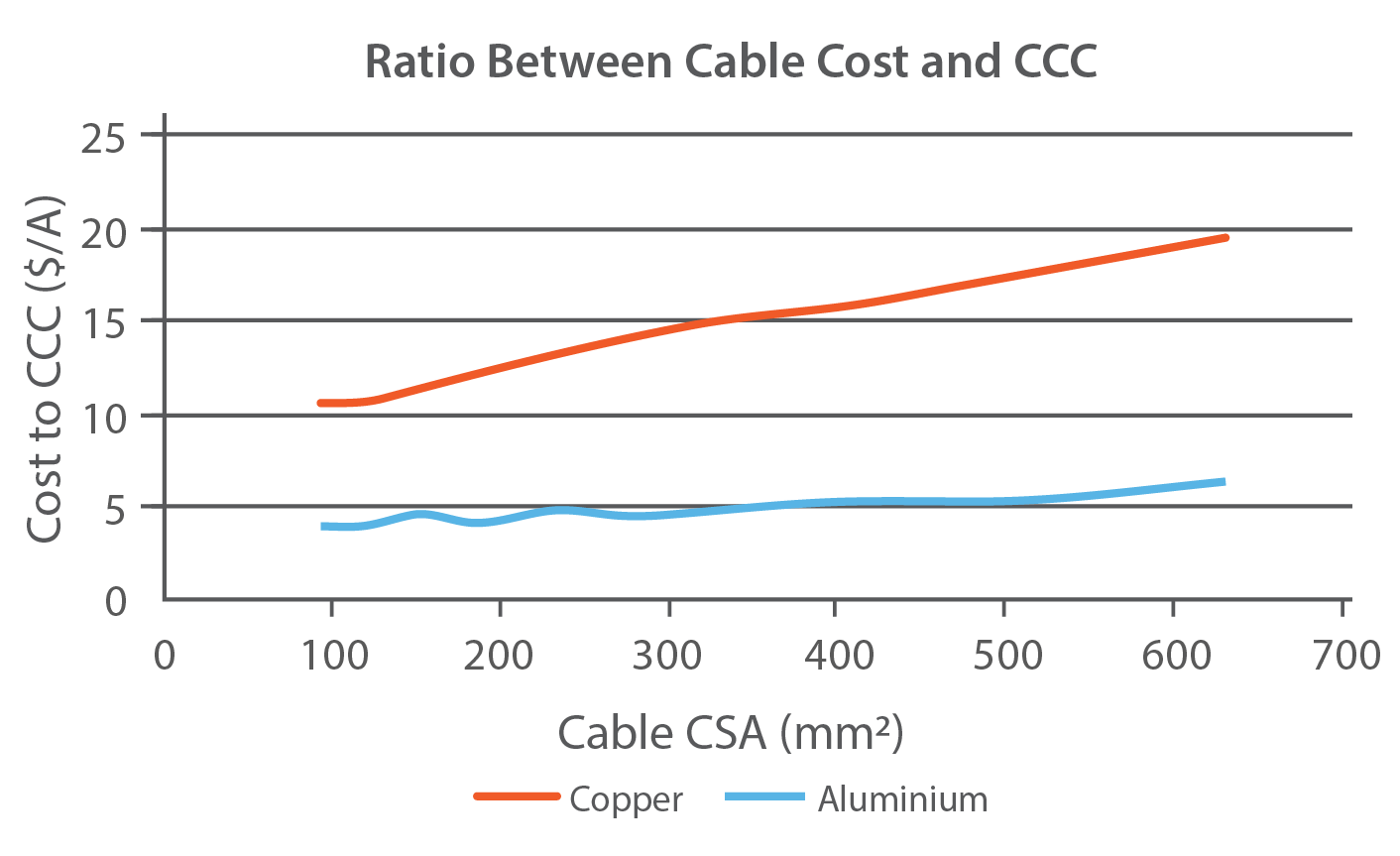
Figure 1: Cost divided by CCC vs cable sizes
Voltage Drop in Aluminium vs Copper Cables
The expected voltage drop for each cable size can be found in Tables 40 to 51 of AS/NZS 3008.1.1:2017. Table 41 provides the voltage drop for the relevant copper conductors while Table 44 can be used for aluminium. These tables give the AC three phase voltage drop values, but they can easily be applied to AC single phase or DC by multiplying the values by.
The values in Table 2 assume a maximum expected temperature of 75°C and unity power factor to emulate DC cables.
Table 2: Voltage drop and price per 100m for selected copper (Cu) and aluminium (Al) cables
| Conductor Size | Cu Flexible (mV/A.m) | Cu Price ($AUD/100m) | Al (mV/A.m) | Al Price |
| 95 | 0.449 | 2,336.02 | 0.702 | 729.67 |
| 120 | 0.371 | 2,818.52 | 0.565 | 863.98 |
| 150 | 0.319 | 3,500.51 | 0.472 | 1,112.52 |
| 185 | 0.277 | 4,287.82 | 0.391 | 1,183.02 |
| 240 | 0.24 | 5,710.63 | 0.319 | 1,577.19 |
| 300 | 0.219 | 7,071.36 | 0.276 | 1,795.20 |
| 400 | 0.202 | 9,177.19 | 0.24 | 2,391.42 |
| 500 | 0.191 | 11,705.32 | 0.216 | 2,884.56 |
| 630 | 0.181 | 15,333.79 | 0.197 | 3,969.47 |
With increasing cable size, the difference in voltage drop between copper and aluminium decreases while the cost of copper increases significantly (Figure 2). Much like the CCC, this indicates that aluminium has a strong cost advantage when small voltage drop is required.
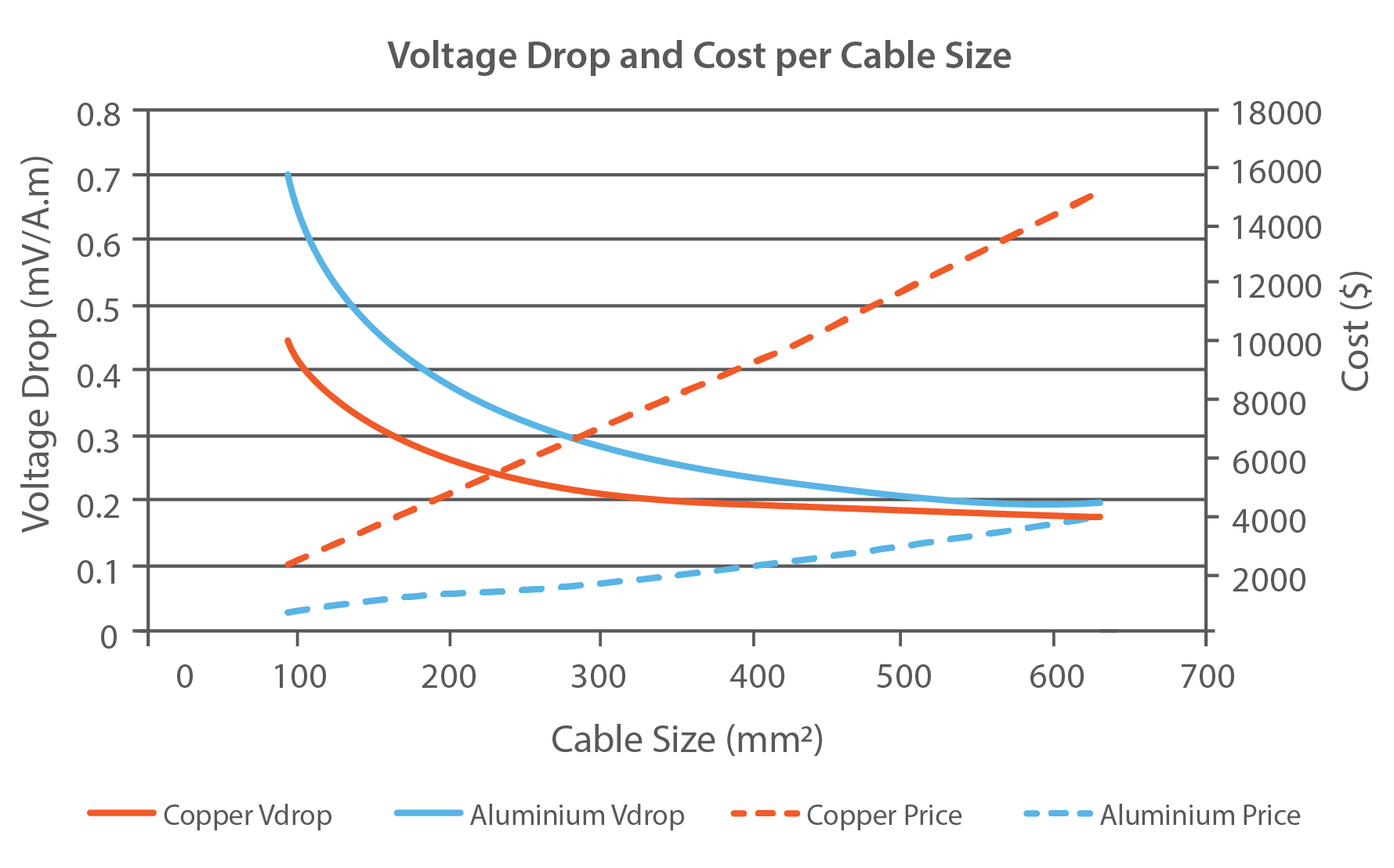
Figure 2: Voltage drop and cost per 100m for each cable size
Short Circuit Temperature Rise
Section 5 of AS/NZS 3008.1.1:2017 contains the relevant calculations for maximum permissible short-circuit currents based on material dependant constants, cable CSA and duration of short circuit. It is important that the selected cables are able to withstand short circuit conditions for a short amount of time without melting insulation or damaging the cable.
The equation for determining permissible short circuit current is:
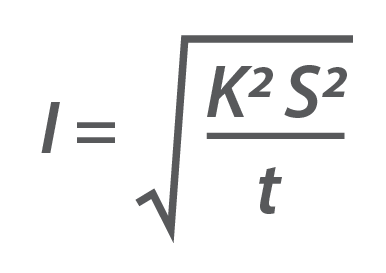 Where:
Where:
I = short circuit current (A)
t = duration of short circuit (s)
K = material dependant constant from AS/NZS 3008.1.1:2017 Table 52
S = cable cross sectional area (mm2)
Using this equation, the short circuit performance of the two conductor materials can be compared. An initial conductor temperature of 75°C and a final conductor temperature of 140°C will be used as 140°C is the temperature limit for V-90 insulation for cables greater than 300mm2. The K values for these conditions are 98.7 and 65.2 for copper and aluminium respectively.
Table 3: Maximum permissible short circuit current for Aluminium vs Copper Cables
| Conductor Size | Short Circuit Current (A) | |
| Copper | Aluminium | |
| 95 | 9,376.5 | 6,194 |
| 120 | 11,844 | 7,824 |
| 150 | 14,805 | 9,780 |
| 185 | 18,260 | 12,062 |
| 240 | 23,688 | 15,648 |
| 300 | 29,610 | 19,560 |
| 400 | 39,480 | 26,080 |
| 500 | 49,350 | 32,600 |
| 630 | 62,181 | 41,076 |
Similarly to the CCC, an aluminium cable will have roughly the same performance as a copper cable that is two sizes smaller. Therefore the same conclusions can be made, that is aluminium is a financially superior option for this range of cable sizes, with the benefits becoming more apparent as cable size increases.
Aluminium vs Copper Cables Example
Consider the following sub-array cable with a route length of 150m carrying a current of 250A and a VOCof 1000V. The short circuit current of the sub-array is 280A and the maximum voltage drop will be 1.5%. The cable will be in an underground wiring enclosure and there are 2 sub-arrays in total. The design requires single core insulated conductors from the same supplier as previously mentioned. Using this information, the cable cost for using a copper or aluminium conductor can be compared by calculating the minimum cable sizes needed to satisfy CCC, voltage drop and short circuit temperature rise.
CCC
Assuming there is no downstream overcurrent protection, the minimum CCC of the cables will be 1.25 x sum of short circuit current of all other sub-arrays as per Table 4.2 of AS/NZS 5033:2014. Therefore the minimum CCC required will be 1.25 x 280A = 350A. Table 4 of AS/NZS 3008.1.1:2017 will be used for cable sizing. From the underground wiring enclosure column, if a copper cable is to be used, it must be a minimum of 185mm2. If an aluminium cable is to be used, it must be a minimum of 300mm2.
To determine the voltage drop in millivolts per ampere metre, the equation in 4.2 of AS/NZS 3008.1.1:2017 will be used:
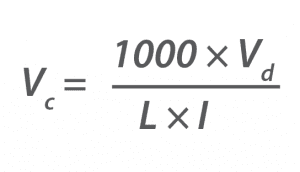 Where:
Where:
VC = millivolt drop per ampere metre route length (mV/A.m)
Vd = actual voltage drop (V)
L = route length (m)
I = current to be carried by the cable (A)
To apply the tables to single phase, the VCcalculated here will be multiplied by 0.866. Therefore the VCfor this scenario will be 0.346mV/A.m. Tables 41 and 44 of AS/NZS 3008.1.1:2017 will be used to find the minimum cable size for copper and aluminium respectively.
The minimum cable size for a copper cable will be 150mm2while an aluminium cable must be at least 240mm2.
Short-Circuit Temperature Rise
Considering Table 3, the short circuit current of this installation is significantly lower than the maximum permissible short circuit currents. This will therefore not be the deciding factor for cable size.
Cost Comparison
For both conductor materials, the cable size will be based off the current carrying capacity. I.e. copper cable must be 185 mm2 or aluminium cable must be 300 mm2. Using the prices from table 1, the cost of the copper cabling will be $4287.82per 100m whereas the cost of aluminium cabling will be $1795.20 per 100m. The aluminium cable in this scenario costs approximately 42% of the equivalent copper cable. Even after considering the additional costs associated with aluminium, there will be significant savings if aluminium is used.
Aluminium vs Copper Cables Conclusions
Regardless of whether or not the cable size is determined by CCC or voltage drop, aluminium cables appear to be more cost effective, at least when only considering upfront cost. This is especially true for designs that require higher CCC rated cables or lower voltage drop. For projects with smaller minimum cable size, the additional costs associated with aluminium such as the bi-metallic lugs and higher maintenance will make copper the superior option, but as the cable size increases, the significant savings from upfront costs will outweigh these factors. Another issue with aluminium cabling, especially for smaller sizes, is availability. For almost all applications and sizes, there will be a copper cable available on the market. Aluminium is significantly harder to source, especially for smaller sizes between 16mm2to 95mm2.
Copper is currently a vastly more popular option compared to aluminium. This is despite a significant increase in the cost of copper during the commodities boom of the early 2000’s. The price of aluminium on the other hand has remained relatively steady, and if this trend continues it will be more important to consider aluminium as an alternative conductor material.

